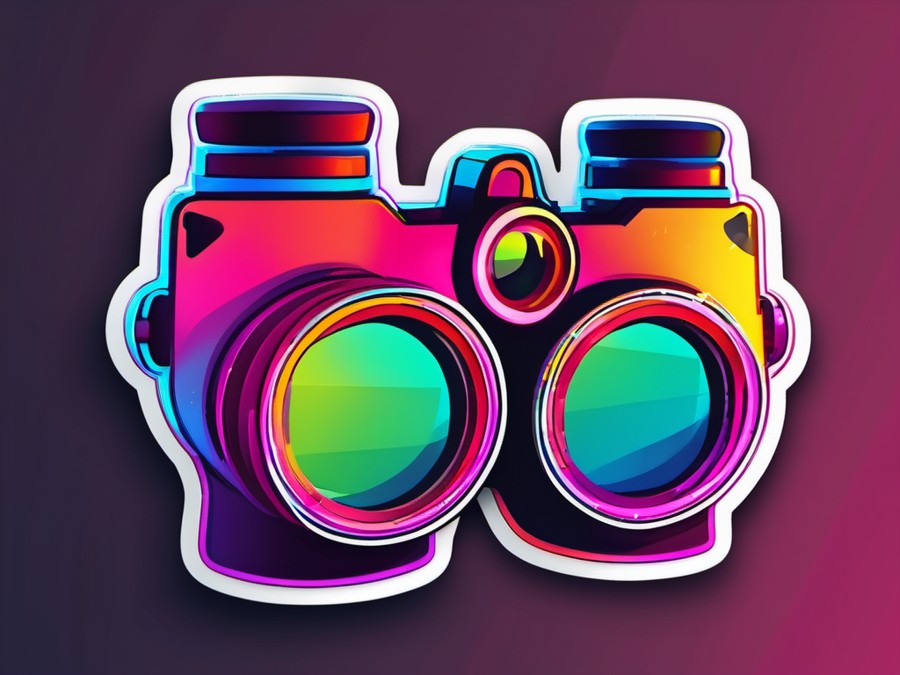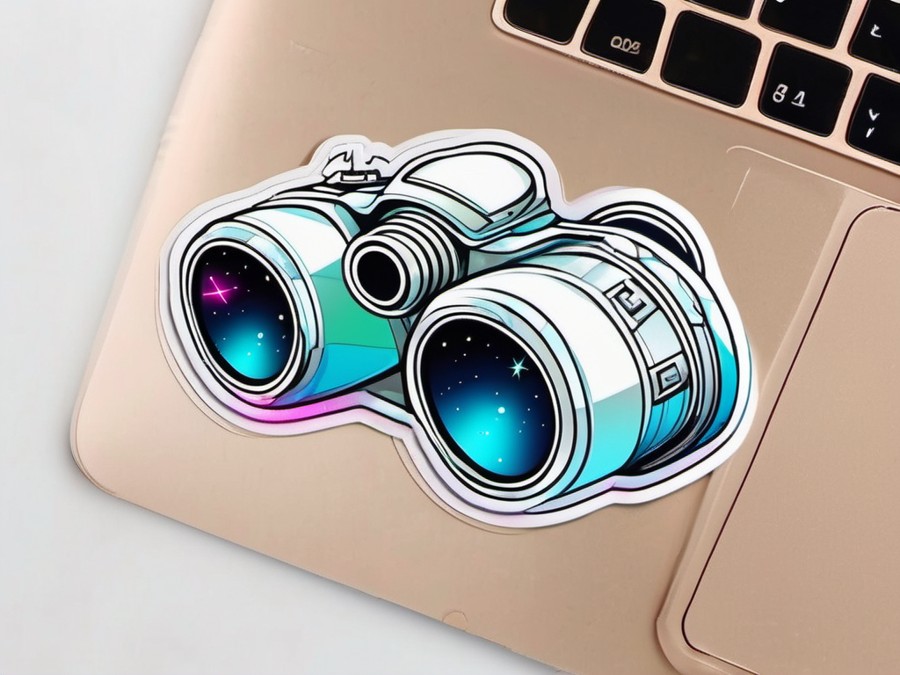· Charlotte Will · Binoculars · 7 min read
What is the best binocular magnification for birdwatching?
Discover the best binocular magnification for birdwatching to maximize your viewing experience. Learn about 8x and 10x magnifications, understand the trade-offs, and find popular binocular models for birding enthusiasts.

Choosing the best binocular magnification for birdwatching can be a game-changer. It’s like having superhero eyes—enabling you to spot birds from afar, observe their details, and enjoy nature more vividly. But with so many options out there, how do you make the right choice? Let’s dive in and explore what magnification is best for birdwatching.
Understanding Binocular Magnification
How Magnification Affects Birdwatching
When you’re out birdwatching, magnification helps you see those feathered friends up close. Higher magnification means more detail, but it also narrows the field of view. This is crucial because a wider field of view lets you spot birds more easily and track their movements.
Common Magnification Ratios for Binoculars
Binocular magnifications typically come in pairs like 8x, 10x, and so on. These numbers represent how many times closer the image appears through the binoculars compared to viewing with the naked eye.
8x is a popular choice for birdwatching because it offers a good balance between detail and field of view. 10x, on the other hand, provides more detail but at the expense of a narrower field of view.
The Relationship Between Magnification and Lens Size
Higher magnifications often require larger lenses to capture enough light. Larger lenses mean more weight and bulk, which can be a drawback if you’re planning on long hikes or need portability.
The Ideal Magnification for Birding
Why 8x is Often Recommended
8x magnification tends to be the sweet spot for birdwatching. It provides enough detail to identify birds while maintaining a wide enough field of view to spot them in the first place. This balance is perfect for most birding scenarios, whether you’re watching from a hide or tracking birds in flight.
When 10x Might Be Better
10x magnification can be beneficial if you’re observing birds at longer distances or need to see more detail. However, this usually comes with the trade-off of a narrower field of view and potentially more weight due to larger lenses.
Considerations for Low Light Conditions
In low light, such as early morning or dusk birdwatching, higher magnification can sometimes be a disadvantage. Larger lenses capture more light, so 10x or even higher magnifications can be useful in these conditions—but they also come with a heftier price tag.
Factors to Consider When Choosing Magnification
Your Personal Preferences and Experience Level
If you’re a beginner, 8x magnification is generally the best place to start. It’s easier to handle and doesn’t require as much experience to keep the image steady. As you gain more experience, you might find that 10x or higher works better for your specific needs.
The Types of Birds You’ll Be Watching
For small, agile birds, an 8x magnification is often more practical because it provides a wider field of view, making it easier to track their movements. If you’re more interested in larger birds or those easily spotted, a higher magnification like 10x might be suitable.
Your Typical Viewing Conditions
Consider where and when you’ll be birdwatching. Long distances might require more magnification, while dense forests or areas with limited visibility benefit from a wider field of view. Also, think about whether you’ll be birdwatching in bright sunlight or under low light conditions.
Real-World Examples of Binocular Magnification in Birdwatching
Observing Small, Agile Birds
Imagine trying to spot a hummingbird flitting from flower to flower. An 8x magnification is ideal here because it gives you a wide enough view to follow its quick movements. Higher magnifications might make it harder to keep the bird in sight due to the narrower field of view.
Spotting Birds in Dense Forests
When birdwatching in a dense forest, you often need to see more of your surroundings to locate birds. An 8x magnification helps you scan the area effectively, making it easier to spot birds hidden among the trees and foliage.
Viewing Birds from a Distance
If you’re watching birds from a hide or long distance, a 10x magnification can be useful. It allows you to see more detail, which is particularly beneficial for identifying specific features like plumage patterns or behaviors.
Additional Features to Enhance Your Birdwatching Experience
Image Stabilization and Shake Reduction
Some binoculars come with image stabilization or shake reduction features, which can be a lifesaver. These help maintain a steady image, especially useful if you’re prone to hand tremors or want to use higher magnifications without sacrificing image clarity.
Focus and Zoom Capabilities
Look for binoculars with quick focus mechanisms or zoom capabilities. This allows you to rapidly adjust from one distance to another, ensuring you don’t miss out on any sudden bird sightings.
Comfort and Ergonomics
Long hours of birdwatching require comfortable gear. Invest in binoculars that are ergonomically designed, with features like non-slip grips and adjustable eyecups. Your neck will thank you later!
Popular Binocular Models for Birdwatching
8x42 Binoculars – A Common Choice
8x42 binoculars are a staple among birdwatchers. They offer a great balance of magnification and field of view, along with good light-gathering capabilities. Models like the Nikon Monarch 5 or Leica Ultravid 8x42 are popular choices for their high-quality optics and durability.
10x42 Binoculars – For the Details
If you find yourself needing more detail, 10x42 binoculars might be the way to go. They provide that extra magnification while still maintaining a portable size. The Swift Optics Julian 10x42 is known for its excellent clarity and ease of use.
High-End Binoculars for Enthusiasts
For those looking to invest in top-tier optics, there are high-end models designed specifically for birdwatching. The Zeiss Victory SF 10x42 or Swarovski EL 8.5x42 offer superior image quality and durability, making them ideal for serious birding enthusiasts.
Tips for Maintaining and Caring for Your Binoculars
Cleaning the Lenses and Body
Regularly clean the lenses of your binoculars to keep them in top condition. Use a soft cloth or lens cleaning wipes designed for optical equipment. Also, clean the body occasionally to remove any dirt or debris that might affect performance.
Storing Binoculars Properly
Store your binoculars properly to protect them from the elements. Use a protective case or pouch when not in use, and keep them in a cool, dry place. This will help extend the lifespan of your binoculars and maintain their optical performance.
Regular Maintenance Checks
Perform regular maintenance checks to ensure your binoculars are in good working order. Inspect the focus and zoom mechanisms for any signs of wear or damage. If you notice any issues, consider taking them to a professional for servicing.
Conclusion
Choosing the best binocular magnification for birdwatching can greatly enhance your experience. 8x magnification is generally the go-to choice for its balance of detail and field of view, but 10x can be beneficial in specific situations. Consider your personal preferences, the types of birds you’re watching, and your viewing conditions before making a decision.
Regardless of the magnification you choose, investing in quality binoculars and taking good care of them will ensure many enjoyable birdwatching adventures. Happy birding!
FAQs
Q1: Can I use binoculars with higher magnification for birdwatching?
- A: Yes, but there are trade-offs to consider. Higher magnifications provide more detail but have a narrower field of view and can be harder to keep steady.
Q2: What if I can’t decide between 8x and 10x magnification?
- A: Try both if possible; experience can be the best teacher. Sometimes, having two pairs of binoculars—one for each magnification—can be beneficial.
Q3: Are there any drawbacks to using 8x magnification for birdwatching?
- A: Less detail at longer distances, but generally well-balanced. For most birding scenarios, 8x is a solid choice.
Q4: Can I use my binoculars for other outdoor activities?
- A: Absolutely, versatile optics can be used for various nature viewing. They are excellent for wildlife spotting and even stargazing.
Q5: Are there any binoculars specifically designed for birdwatching?
- A: Some models are marketed towards birders, focusing on optics and ergonomics. Models like the Zeiss Victory SF or Swarovski EL are highly regarded in the birding community.
Internal Links:




